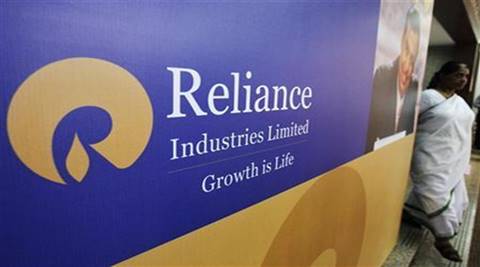Reliance Industries Ltd’s fiscal third quarter net profit rose 4.2% on-year to Rs 7,506 crore, helped by higher earnings from refining and inventory gains.
While the refining & marketing, petrochemicals and organised retail businesses grew as expected, the oil & gas exploration business continued to suffer due to lower production of gas from domestic fields and pricing pressure on output from shale fields in the US.
Here are five key takeaways from the Oct-Dec financial results of India’s largest private sector company by profit.
You may also like to watch this:
1. Telecom
RIL said it will invest a further Rs 30,000 crore in its telecommunication venture Reliance Jio Infocomm to enhance network coverage and capacity, invariably augmenting the competition against the incumbents such as Airtel and Vodafone. The company already had 16 million subscribers at the end of the first month, crossed 50 million subscribers in 83 days and had 72.4 million users as on December 31, in less than four months of the launch. It added over 19 million users in October, far exceeding the largest competing incumbent Bharti Airtel, which added 2.33 million in the same month.
Reliance said Jio continues to face interconnection congestion issues with some of the large operators on account of inadequate provision of points of interconnection (POI) capacities even months after commencement of services by Jio.
Reliance’s entry into the telecom space has forced the incumbent players to drastically cut tariffs – as much as by 66% – in order to retain their customer base, and has put the entire sector under tremendous pressure of choosing between protecting margins and user base.
Reliance Jio recently extended its inaugural free voice and data plan till March 31.
In the coming months, Jio will connect lakhs of merchants and shops to create commerce and payment network to support Prime Minister Narendra Modi’s vision of making India a cashless economy, Ambani said at a recent event.
2. Gross Refining Margins (GRM)
RIL’s Gross Refining Margins (GRM), a measure of realisation from making products out of crude oil, rose to $10.8/barrel in the third quarter from $10.1/barrel in the preceding quarter. This was in line with the rise in benchmark Singapore Gross Refining Margin to $6.7/barrel in the quarter that ended on December 31. The rise in GRM was also aided by modest inventory gains, which means the company earned more money as prices of its products rose due to higher international crude oil prices, but its raw material costs remained low due to oil inventories built up at lower prices.
3. Petrochemicals Business
Pace of domestic demand growth slowed down due to demonetization of old currency notes during the quarter. However, demand is expected to revive as the effects of demonetisation are absorbed and the economy readjusts to the new normal, the company said.
In 3Q FY17, domestic polymer demand was higher by 5% on-year. PE demand witnessed the highest growth rate of 8% among all polymers, driven by a strong pull from the multilayer film, HM pipe, HD raffia and monofilament segments. PP demand was higher by 5% aided by consumption from raffia packaging, fibre filament and appliances sector. PVC demand witnessed a marginal growth rate of 1% due to lower demand on account of seasonality and high agri/rural exposure. RIL’s polymer production was down by 11% mainly due to a planned FCCU turnaround and subsequent PP plant shutdown during the quarter at Jamnagar.
You may also like to watch this:
4. KG-D6: $1.55 billion penalty and fall in gas output
The government imposed a penalty of $1.55 billion on RIL for extracting ONGC’s share of natural gas in the Krishna-Godavari basin and producing it as its own. RIL’s has served an arbitration notice against the penalty. “The company remains convinced of being able to fully justify and vindicate its position that the Government’s claim is not sustainable,” it said. RIL said it has worked within the boundaries of the block awarded to it and has complied with all applicable regulations and provisions of the Production Sharing Contract (PSC). It has already invoked the dispute resolution mechanism in the PSC and has issued a Notice of Arbitration to the government in November, it said.
Further, RIL said the natural gas output from its D6 fields in the Krishna Godavari basin fell 29% on-year to 24.4 billion cubic feet in the fiscal third quarter. Fall in oil and gas production was mainly on account of natural decline in the fields, it said.
5. Retail Business
Reliance Retail added 111 stores across various store concepts during the quarter. It operated 3,553 stores across 686 cities with an area of over 13.25 million sq ft as on 31st Dec, 2016, the company said.
With regard to retailing fuel, Reliance has expanded the network of petro outlets with 18 new outlets opened during the quarter and now operates 413 outlets. There was a tepid growth in sales on-quarter due to demonetisation since Reliance petro outlets were not allowed to accept demonetized currency unlike PSU Oil Marketing Company (OMCs) outlets, it said.
Demonetisation also led to cautious buying by customers for a short period across its all other retail formats.


